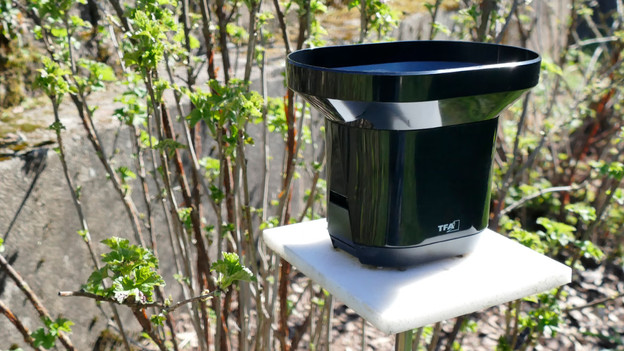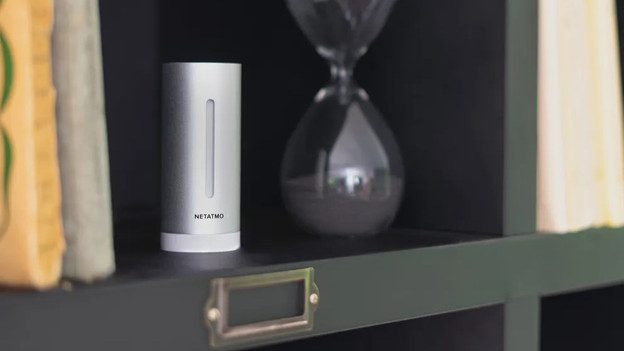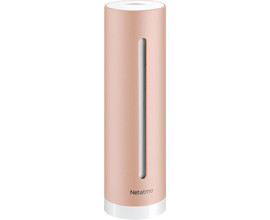
Where do you hang the sensors of a weather station?
Temperature

The weather station measures the temperature with a thermometer. The best spot for this temperature sensor is in the shade. Mount it at least 1.25m above the ground. Make sure that you don't place the sensor in between trees or shrubs. That way, enough wind passes it and the sensor can properly measure how warm it is. You also shouldn't place the weather station above a black surface such as asphalt. This type of surface retains heat. As a result, it appears warmer to the sensor than it actually is and the reading can be up to 5°C too high.
Rain

A rain gauge is also called a pluviometer, and it measures how much rain falls per square meter. You read the amount of rain in millimeters. If you see 1mm of rain, it means that 1L of water falls per square meter. You should place the rain gauge in an open area for the most precise reading. Make sure there isn't a tree or wall close to the rain gauge that stops the rain.
Wind

You measure the wind force and direction with a wind meter, also known as an anemometer. Mount it in a spot with the least amount of other objects near it, such as a large field or meadow. Don't live close to a meadow? Place the meter on the roof. The higher the weather station is, the more accurate the reading. Place the weather station with the weathervane facing north. That way, it measures from which direction the wind is coming. You can use a compass of app on your smartphone for this.
Air humidity

You can place some weather stations indoors. With a hygrometer, for example. This measures the humidity. You can place this meter in the living room or bedroom. Don't place the hygrometer too close to a window or heater, because the air is always dryer or more humid there than in the rest of a room. It's important to maintain the humidity levels in your home. If the humidity is too high or too low, it can cause health issues such as headaches and sleeping problems.
Air quality
In addition to the humidity, you can also measure the air quality indoors. With an air quality monitor, you can measure the amount of carbon dioxide, carbon monoxide, and fine dust in the air. If you properly maintain the air quality in your home, you prevent health issues such as headaches and breathing problems. You can place an air quality monitor anywhere in your house. Keep it away from windows and doors for the most accurate readings.



